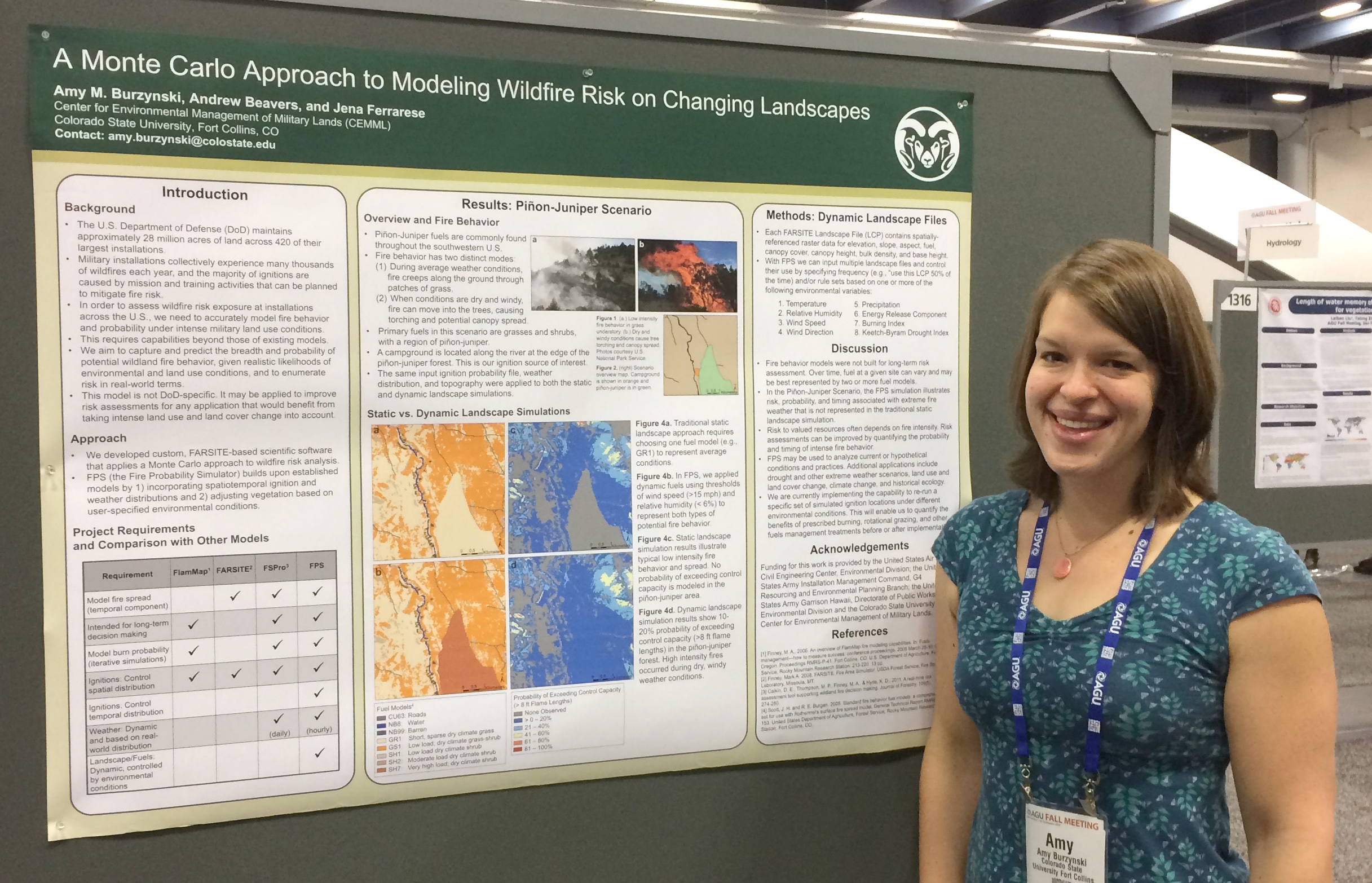CEMML’s Wildland Fire Support Center, headed by Andrew Beavers, has developed and refined a method for modeling wildfire risk that is particularly useful in military applications. Amy Burzynski, a researcher and data analyst for the Wildland Fire Support Center, presented the method at the 2016 American Geophysical Union (AGU) Fall Meeting, one of the largest international Earth and space science conferences. Her presentation, “A Monte Carlo approach to modeling wildfire risk on changing landscapes,” demonstrated some of the novel aspects of the risk-analysis method.
The primary advantage of the method is its ability to account for vegetation dynamics across extensive areas over time, which most other fire-risk models do not. Tens of thousands of fires are simulated with a probabilistic model that accounts for the spatial and temporal effects of prescribed burning, livestock grazing, and other drivers of cyclical changes in vegetation. Years of historical weather data are used to model the atmospheric conditions and fuels associated with these simulated fires. Use of empirical data makes it possible to quantify the model outputs in practical terms, such as expected number of fires per year or the probability of exceeding suppression capacity for any location. These simulations provide valuable insights for fire and natural resources managers at the installation and national levels.
Beavers explained the value of this novel approach:
“Nuance and detail are critical in risk assessment. Low-probability, high-consequence events are inherently rare and are usually what we’re looking for. To summarize or otherwise average out weather data, for example, is to by definition excise the very data we’re most interested in. Our approach never filters or averages the data. It uses the highest quality, most detailed data available to ensure nuance is not lost, and, therefore, high-risk events are not overlooked. This approach applies the best available technology to address as much of the real-world variability as possible and is particularly well suited to the highly dynamic landscapes of military installations.”
The new fire-risk model could be applied to other environmental management contexts. Biological assessments, for example, often seek to estimate the effects of proposed actions on protected species. The method not only can project whether the likelihood of fire will change due to a proposed action, but how large the change is likely to be. Burzynski, Beavers, and others in the Wildland Fire Support Center are collaborating with other researchers to expand the method’s capacity to model potential effects of climate change and other ecological management challenges.

Project sponsors
US Army Garrison-Hawaii
US Army Installation Management Command Directorate of Public Works Environmental Division
US Air Force Civil Engineering Center Environmental Directorate
US Army Office of the Assistant Chief of Staff for Installation Management
More information
Link to Abstract
American Geophysical Union (AGU)
CEMML Wildland Fire Services